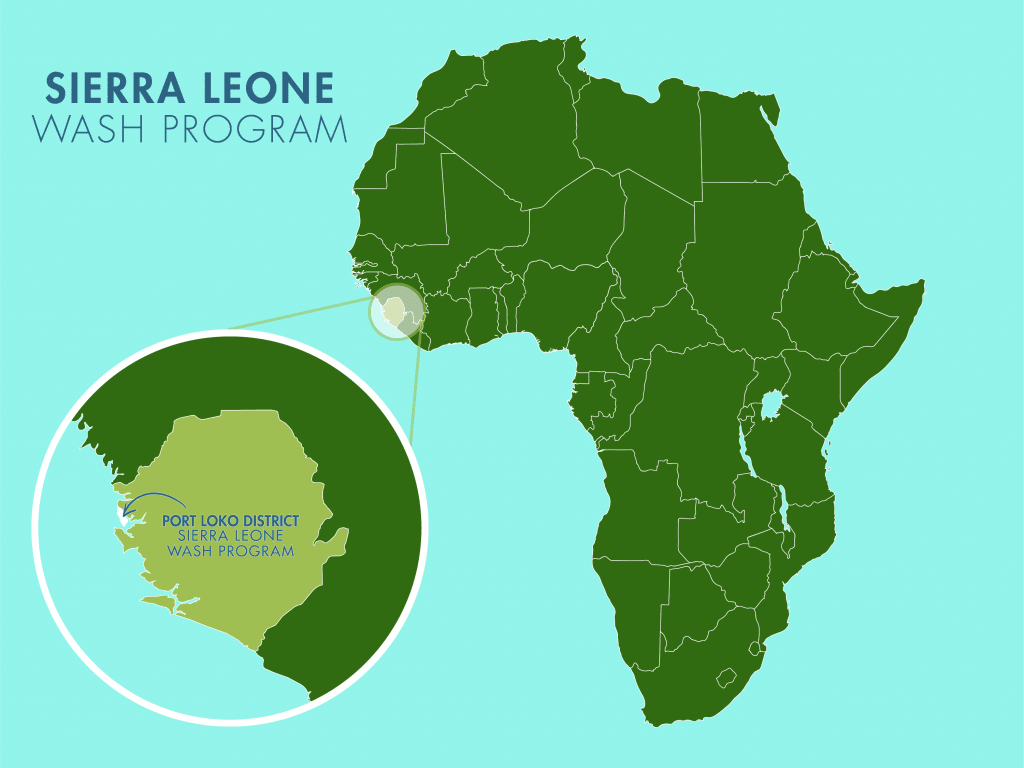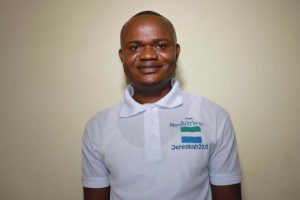In the quiet community of Daries Salaam, where 184 people reside, families have endured the daily struggle of finding safe water for years. Their main source—a hand-dug well —was once the pride of the community. Since 2012, it had served everyone faithfully and was maintained by the community itself. But after years of wear and tear, the well broke down. Leaving them no other option than to utilize swamp water.

Field Officer Philip James Allieu observed, “The pump and well pad are now broken, and the well appears abandoned. Therefore, the well has been closed for over two years and is not being used by the community anymore.”
With the well no longer functional, they have turned to a nearby swamp. “The community now gets their water from surface sources within a nearby swamp,” Philip noted. “This option is not safe or clean.” The swamp water, dark and muddy, carries contamination from surrounding farming and household activities.

The situation is dangerous, too. The swamp lies in a bushy area far from the homes. “The ground within this area is slippery and unstable, further endangering the lives of individuals by increasing the chances of falling while carrying water,” Philip reported.
Philip’s reflections describe the urgency for a solution. “Among the concerns I learned from my experience with water users is about drinking swamp water. This water source has several water contaminants, most of which are from their daily work, but they still cannot maintain it. Residing within this community during [the] rainy season requires God's protection because the swamp water becomes completely undrinkable. The swamp floods, and the water remains unclean until the dry season comes, but the community still consumes it.”
Among those most affected is sixteen-year-old Fatmata, who spends hours each day making the long, tiring journey to the swamp. “Now that it (the well) is not working, I must get water from the swamp, which is quite distant. The swamp water is generally dirty because of farm work around it. It takes much longer to fetch water from the swamp than from the well in the community.”

Fatmata.
Her days are carefully structured around the time it takes to get water.
“I would not take up much of my time fetching water if the water well were working. This would imply that I could use my time to carry out all my daily activities. I would be able to sweep the house, wash dishes, fetch water for bathing, and go to school early in the morning. In the afternoons, I would return from school, help my mother prepare food, bathe, and then subsequently do homework and study before going to bed," said Fatmata.
However, for now, water collection takes priority, and it’s often a risky task.
“I am more concerned about safety when I am fetching water from the swamp because of the bushy area, slippery ground when carrying water, and pain from carrying a heavy container of water on my head. The swamp area is snake-prone, which is [a] risk to my safety,” Fatmata explains.

Her daily reality paints a difficult picture, and the long walk for water affects her schooling.
“Currently, fetching water from the swamp is very exhausting and time-consuming. I must trek a long distance to get water, and most of the time, I am not even capable of collecting as much as I want. Having spent all that time collecting water, I struggle to focus on my studies at home, and it ends up affecting my end-of-term exam results. In addition, I normally arrive at school late in the morning as I need to fetch water first. Sometimes, I miss classes altogether, which again impacts negatively on my performance in school," Fatmata shared.

Still, despite all the challenges, Fatmata’s ambition remains unshaken.
“I wish to be a pilot after finishing school. I wish to fly aircraft between nations. I have photographs of female pilots, and I wish to become [one of] them. My teacher advised me to study and work hard so that I can achieve my dream. I know science is difficult, but I am willing to try extra hard so that my dream becomes a reality," Fatmata declared.
Yet, every journey to the swamp weighs on her hope.
“Now, trekking to the swamp to fetch water back home is not my preferred activity. It is so difficult and exhausting work because of the distance. I always get frustrated being forced to go and fetch water from the swamp, especially when coming back from school hungry," she continued.
The proposed borehole conversion and rehabilitation offer hope. Once complete, families like Fatmata’s will have a clean, reliable water source again—right in the center of the community, safe from snakes and far from the dangers of the swamp. For Fatmata, it will mean more than just clean water. It will mean the chance to rest, study, and pursue her dream of flying high above the struggles that once kept her feet heavy on the muddy path to the swamp.
Steps Toward a Solution
Our technical experts worked with the local community to identify the most effective solution to their water crisis. They decided to rehabilitate an unsafe, insufficient well to convert it to a borehole well.
Rehabilitating a Well
Abundant water often lies just beneath our feet. Aquifers—natural underground rivers—flow through layers of sediment and rock, offering a constant supply of safe water.
The well marked for this overhaul is dry for several months a year and needs major work to supply adequate, clean water to the community year-round. A hand auger will be lowered inside the well, powered by a drill team. The team will work to drill several meters deeper to hit a sufficient water column to ensure the well supplies water throughout all seasons. As the team drills, the casing will be installed, transforming the bottom of this well into a borehole. PVC piping will connect this lower system directly to the pump, a component we know will also improve water quality. Finally, we will reconstruct the platform for the well and attach the hand pump.
Once this plan is implemented, everyone within the community will have access to safe drinking water in quality and quantity, even through the dry months.
Community Education & Ownership
Hygiene and sanitation training are integral to our water projects. Training is tailored to each community's specific needs and includes key topics such as proper water handling, improved hygiene practices, disease transmission prevention, and care of the new water point. Safe water and improved hygiene habits foster a healthier future for everyone in the community.
Encouraged and supported by our team's guidance, the community elects a water user committee representative of its diverse members. This committee assumes responsibility for maintaining the water point, organizing community efforts, and gathering fees to ensure its upkeep.

 Borehole Well and Hand Pump
Borehole Well and Hand Pump

















